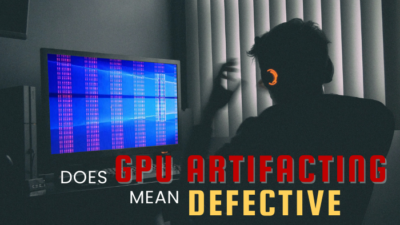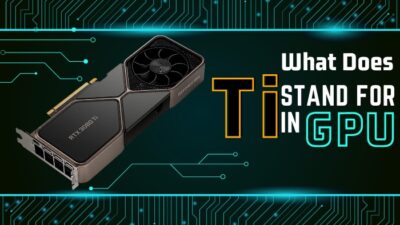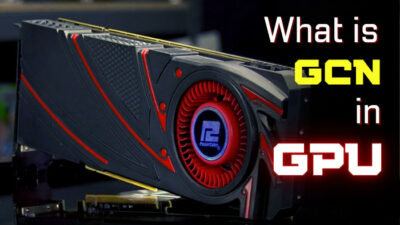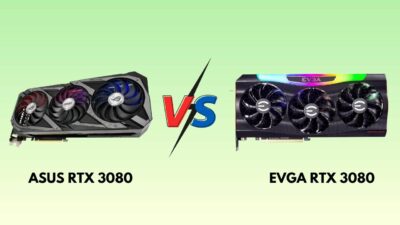The i9-10900K is a few generations old now, but don’t let that fool you. It is still going strong and is a perfectly capable processor for running the latest titles in 4K.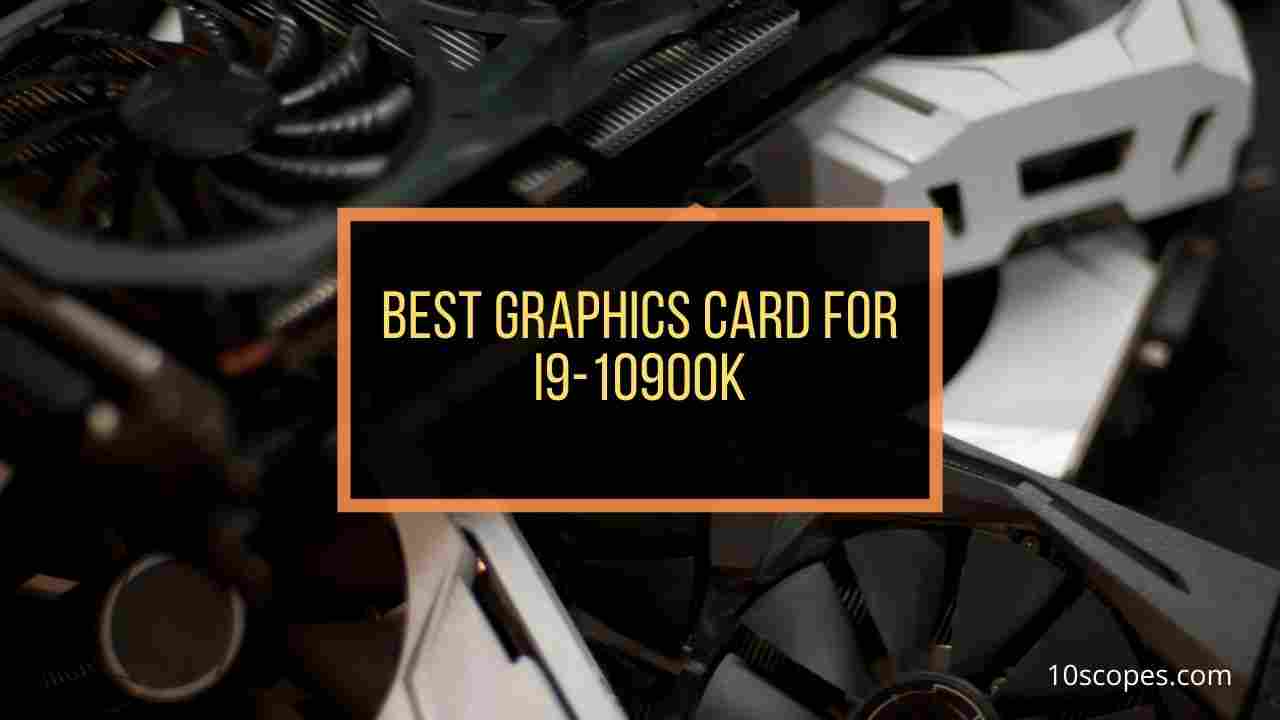
But you need a perfectly capable graphics card to make sure you do not suffer any frame drops and stuttering. To help you make the best purchasing decision, we have rigorously tested and compiled a list of the best GPUs for i9-10900K. For your ease, you will find the best GPU as per the resolution of your monitor.
If you are in a hurry: We found the ASUS ROG Strix RTX 4090 (no surprises here) to be the best GPU that you can buy right now for i9-10900K.
So, let’s jump right in to know which GPUs made it to our shortlist.
The Best Graphics Cards For i9-10900K As Per Our Testing
| Model | Award | Best For |
|---|---|---|
| Asus ROG Strix RTX 4090 OC Edition | Editors Choice | 4K and Higher Resolution |
| MSI Gaming RTX 4080 | Runners Up | 4K Gaming |
| XFX Merc 310 RX 7900 XTX | Best Value Upper Mid Range | 4K Gaming |
| Asus Dual RTX 4070 OC Edition | Best Value Mid Range | 2K Gaming and Higher |
| MSI Gaming RX 6750 XT | Best Bang For Buck | Gaming in 2K |
| PowerColor Fighter RX 6600 | Best Entry Level GPU | 1080p Gaming |
Best for 4K Gaming
Gaming at 4K resolution is no easy feat. So, the GPUs that made the cut are the high-end units. Sure, you can choose a different model of GPU for hundreds less. But it will not give you the maximum possible performance. So we kept that in mind and chose the GPU that will at least last you three years running AAA titles at the most insane settings.
1. Editors Choice: ASUS ROG Strix RTX 4090 OC Edition
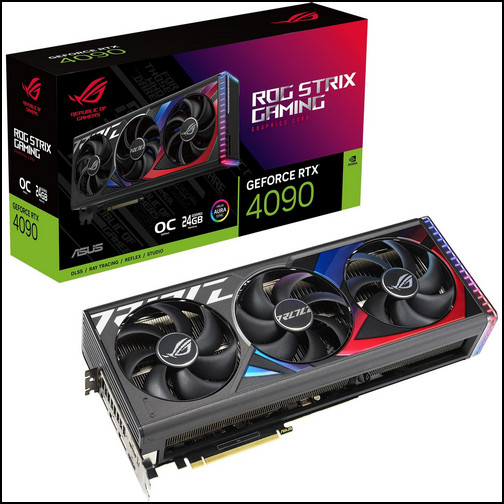
SPECIFICATIONS
- Core Clock (in Megahertz): 2610, 2640 (OC)
- Memory Clock (in Megahertz): 1400
- Video memory: 24 GB
- Cuda Cores: 16384
- Required PSU: 1000 W (1×16-pin power connector)
- »Quieter than the Founders Edition RTX 4090.
- »Comes with a nice little overclock.
- »Larger heatsink than the competitors.
- »Lower temperatures.
- »Overclocking headroom.
- »Large in size. You need to consider the internals of your case to see if this fits.
Why We Picked It
The ASUS ROG Strix RTX 4090 is an absolute behemoth of a graphics card. Measuring a whopping 36 cm by 15 cm by 7 cm, it is one of the largest cards out there.
What you get with the huge heatsink is superb cooling. We found that it did not cross 68 degrees while gaming at the highest settings. The memory temps were a little higher at 74 degrees but still within the safe limits. The average noise was 40 decibels when using the quiet profile. This is made possible by using the quiet BIOS that ASUS has included.
This means you still have headroom for overclocking. It already comes with a 120 MHz higher clock speed, which is nice to start with. If you are ambitious, you can definitely tweak the settings, and you have ample cooling to support that.
But what about gaming? Even if I did not talk about it, you could just take my word and go and purchase it. This is a card that can do even the most demanding titles at ultra settings and still hit upwards of 70 fps. The power you have is just unprecedented. A few benchmarks reveal this.
| Title | Average FPS | Minimum FPS |
|---|---|---|
| CyberPunk 2077 | 137 | 103 |
| God of War | 107 | 84 |
| COD Warzone | 221 | 196 |
| Uncharted 4 | 115 | 75 |
| Red Dead Redemption 2 | 110 | 90 |
Never once we got a game that dipped below 70 fps. Mind you, this is with ultra settings and Ray tracing enabled. This is a card that you can use to truly drive a 4K 120 Hz monitor.
With the extra gaming muscle, you must have a decent power supply to back it up. We found it consuming about 444 watts, even with the OC profile. You should at least use a 1000 W PSU to give yourself some headroom if you plan on overclocking this GPU.
Let’s now see what other features you can get. With Ada Lovelace, Nvidia has added a plethora of features such as DLSS3, AV1 Encode/Decode, RTX Super Resolution, and Broadcast.
All these mean RTX 4090 is not only great for gaming but also has good productivity chops. That means video editing and AI-accelerated tasks will get a great boost if you use it for those tasks.
Who It’s For
- Those who are looking for a factory overclocked 4090 with the cooling to back future performance uplifts.
- Has a case that has the room to fit this monster of a card.
- Okay with the Red and Blue accents.
What We Liked Most
- Great Performance. The extra FPS was minimal compared to the competition, but still, it’s there to take it.
- Very quiet. The fans are some of the best air-based coolers you can get on a graphics card.
- Solid components.
What We Didn’t Like
- It was almost 500g heavier than the founder’s edition RTX 4090. We advise you to use a GPU holder to support it.
- Expensive than the competition.
Verdict
The ROG Strix RTX 4090 costs almost 200-300 dollars more than what Gigabyte or MSI offers you. Heck, there is a TUF model that starts at 1600 dollars. But with the ROG Strix, you are getting the best components, superb overclocking, and fantastic cooling that can keep the GPU running for longer without producing excessive heat.
2. Runners Up: MSI RTX 4080 Gaming X Trio
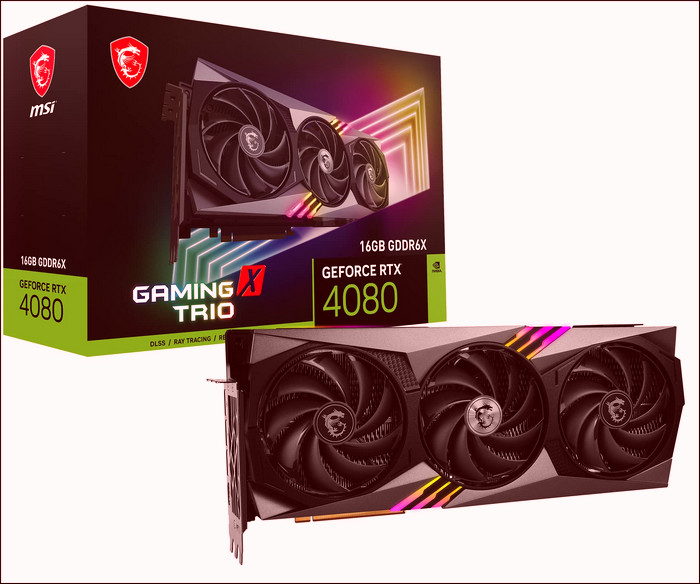
SPECIFICATIONS
- Core Clock (in Megahertz): 2595, 2610 (Extreme)
- Memory Clock (in Megahertz): 1400
- VRAM: 16 Gb GDDR6X
- Cuda Cores: 9728
- Required PSU: 850 W (1×16-pin power connector)
- »Weights lighter than the competition.
- »Operating quietly even at full loads.
- »Cheaper than the other RTX 4080s.
- »Temperatures are a little more than the competition.
- »Not the cheapest 4080
Why We Picked It
The MSI RTX 4080 Gaming X Trio is one of the lightest cards out there. Weighing only 1862 grams, it’s almost 600 g lighter than the AORUS Master or the ROG Strix 4080.
But it is by no means a smaller GPU. The dimensions are 33 by 14 by 6.7 centimeters. But on our Cooler Master H500P case, there still was some clearance left even after installing it. And it has a triple slot design, so keep that in mind too.
The included fans perform great, keeping the noise down to only 38 decibels. This is noticeably quieter than the ASUS TUF or the Aorus Master. As for cooling, the max temperature that we got was 62 degrees while gaming, and a hotspot temperature of 72 degrees. Here the competition fares a little cooler by 5-7 degrees, but MSI does a decent job.
Coming to gaming, RTX 4080 is a great GPU, even for gaming in 4K. For most third-party titles, you are looking at a solid 60 FPS with Ray Tracing enabled. We tested the games at the highest graphical settings.
| Title | Average FPS | Minimum FPS |
|---|---|---|
| COD Modern Warfare 2 | 125 | 95 |
| The Witcher Next Gen | 90 | 70 |
| Assasins Creed Valhalla | 75 | 60 |
| CyberPunk 2077 | 75 | 62 |
Compared with the previous gen RTX 3080, you can see improvements of 42% in 4K and 30% more FPS while gaming in 2K resolutions. That makes this a fantastic GPU to target for 4K 60 FPS and 144 frame rates if you add in DLSS 3.0 goodness.
MSI’s Trio X is power efficient too. Out of the different 4080s tested, this consumed the fewest watts at 310 W. Though we recommend using a PSU that is at least 850 W.
Finally, you get a small stripe of RGB which you can customize depending on your case. The shroud design is totally passable, with nothing over the top. I personally liked the black metal plate, which looks great, and gels with most chassis.
Who It’s For
- Not willing to pay the steep price for RTX 4090, but still want something that can provide plenty of power for 4K gaming.
- Can drive a 240 Hz panel at UHD, for esports titles.
What We Liked Most
- Really silent card without sacrificing any performance.
- Attractive pricing. This can change further with time and become even more compelling.
What We Didn’t Like
- The GPU holder that comes with it does not inspire confidence. Recommended to use a different one
Verdict
RTX 4080 is a great card for gaming at 4K for less than the premiums of 4090. The MSI Gaming Trio X represents a great choice that performs really well without making the loud noises of high-end GPUs.
3. Best Upper Mid Range Value: XFX Merc 310 RX 7900 XTX
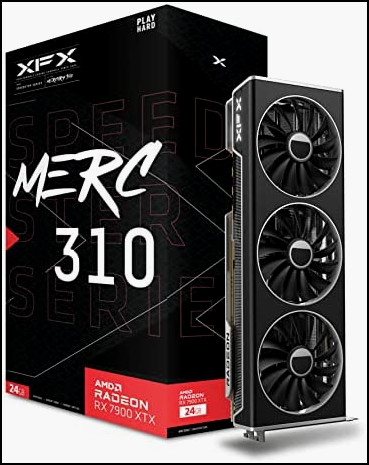
SPECIFICATIONS
- Core Clock (in Megahertz): 1855, 2455 (Game), 2655 (Boost)
- Memory Clock (in Megahertz): 2000
- VRAM: 24 GB GDDR6
- Stream Processors: 6144
- Required PSU: 850 W (3×8-pin power connector)
- »Great Pricing.
- »Superb performance (sans Ray Tracing!).
- »No fancy RGB.
- »Not good performance with Ray Tracing is enabled.
Why We Picked It
The XFX RX 7900 XTX is the cheapest card in this list to compete with both Nvidia’s 4080 and 4090. Priced at 1000 dollars (frequent sales dropping this price to 970), it performs admirably at 4K even with the most demanding titles.
Let’s get over one thing first. This is one large GPU. It stands at 34 cm long, so fit may not be the same with all cases.
Okay, so how about its performance?
The strength of the 7900 XTX lies in pure rasterization performance. If we are talking about synthetic benchmarks, expect this to perform somewhere between RTX 4080 and 4090. In games without Ray Tracing or DLSS enabled, this outperforms RTX 4080 in certain titles and comes really close (20%) to RTX 4090.
| Title | Average FPS | Minimum FPS |
|---|---|---|
| The Witcher Next Gen | 100 | 85 |
| Assassins Creed Valhalla | 85 | 70 |
| CyberPunk 2077 | 73 | 64 |
| COD Modern Warfare 2 | 140 | 115 |
But things are not great with Ray Tracing turned on. Expect the frame rates to be 30-40% lower than what RTX 4080 can achieve. AMD is still trailing with the ray tracing game.
The XFX RX 7900 XTX consumes about 350 W under full load, and this goes up to 410 W when you apply ray tracing too. This is higher than what we got with RTX 4080.
If we come to the thermals and temperatures, they are very good. We got a maximum temperature of 59 degrees, while the sensors recorded a hotspot of 78 degrees. As for acoustics, we did not encounter crazy loud fans, and the noise was barely audible at 38 decibels.
This does not come with RGB, so this will be a perfect addition to no-RGB builds. In addition, XFX also has a support bracket, which I feel is essential to support such a humongous card.
Who It’s For
- Looking to buy the best bang for the buck GPU.
- Those who do not need Ray Tracing, but still looking to do 4K gaming on the cheap.
What We Liked Most
- It’s performance. We were surprised at how well it performed when compared to Nvidia’s higher-end siblings.
- The 24 Gigs VRAM is appreciable when you consider how much you need it these days.
What We Didn’t Like
- Higher power draw. We expected less from RX 7900 XTX due to its improved efficiency.
Verdict
A great 4K capable card which can run the latest titles, costing under thousand dollars. If you can overlook its Ray Tracing abilities, it is the best affordable GPU to buy.
Best for 2K Gaming
Here you should pick a GPU that performs well but still does not cost an arm. Typically, expect the prices to be under 700 dollars to get the most value out of it. While you may not be able to game at ultra settings in 4K, dialing down the details can help you achieve 60 fps using these GPUs.
1. Best Value Mid-Range: Asus Dual RTX 4070 OC Edition
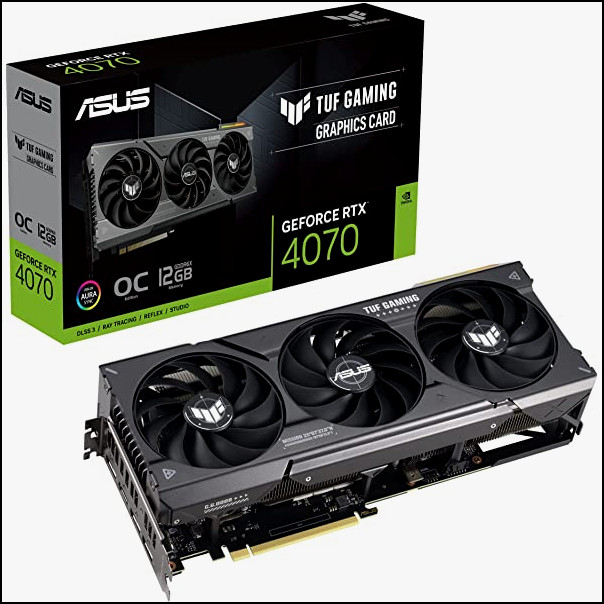
SPECIFICATIONS
- Core Clock (in Megahertz): 2520 (Boost), 2550 (OC)
- Memory Clock (in Megahertz): 2100
- VRAM: 12 GB GDDR6
- Cuda Cores: 5888
- Required PSU: 650 W (1×8-pin power connector)
- »Highly efficient. Great performance per watt ratio.
- »Great performance.
- »Low noise and operating temperatures.
- »Eye-catchy design.
- »Still pricey.
- »Small generational improvement.
Why We Picked It
The ASUS Dual RTX 4070 OC represents the best next-generation mid-range GPU. With Ada-Lovelace architecture, DLSS3, AV1 encoder, NVENC, and improved Ray Tracing cores, it is surely packed with features.
First, let’s look at the dimensions. It measures 26 by 13 by 5 centimeters. So finally, a GPU in this list that can fit in most cases. It comes with a metal backplate which is appreciable. There are no fancy RGBs to talk about, but I liked the translucent shroud at the top. Finally, some different designs were implemented by a manufacturer, so kudos to Asus.
As for performance, you are getting frame rates similar to an RTX 3080. It does not surpass in all the titles but comes really close. The best thing is that on most newer AAA titles, we got an average of 70 fps, even in the most demanding titles at 1440p.
This GPU can do 4K, but 60 FPS is not always guaranteed. But there is DLSS 3 to help you out in that case.
| Title | Average FPS | Minimum FPS |
|---|---|---|
| CyberPunk 2077 (High) | 91 | 83 |
| COD Modern Warfare 2 (Balanced) | 181 | 140 |
| God of War (High) | 148 | 137 |
| Assassins Creed Valhalla | 127 | 96 |
While churning out these frame rates, the ASUS RTX 4070 draws only 183 W. This is due to the newer 5nm process these GPUs are built on.
And it is lower on the temperatures too. We measured an average of 60 degrees and a maximum hotspot temperature of 70 degrees. As for the noise, you get only 38 decibels which to me is really quiet. Unless you really get your ears close to the case, you will not hear the fans spin up.
Who It’s For
- Want the latest generation of GPU that can easily handle 1440p gaming while consuming the least power.
- Those who do not have the largest PC cases.
- Do not need flashy RGBs.
What We Liked Most
- The performance and the power draw. The efficiency is great.
- Single 8-pin power connector.
- Great balance between fan noise and temperatures
What We Didn’t Like
- Still expensive for its launch price.
Verdict
Even though it costs more than its predecessor, ASUS RTX 4070 OC Edition has great performance and cooling without putting too much stress on the wallet.
2. Best Bang For Buck: MSI Gaming RX 6750 XT
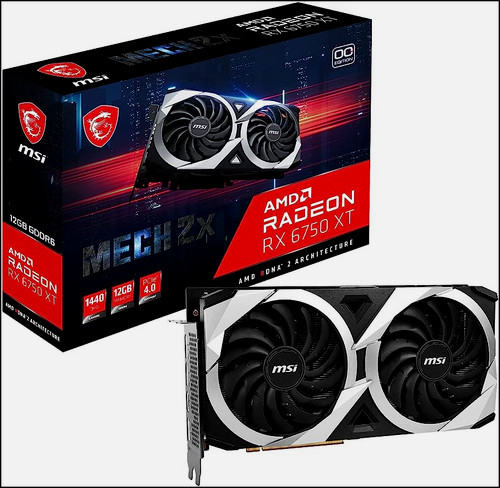
SPECIFICATIONS
- Core Clock (in Megahertz): 2512 (Game Mode), 2618 (OC)
- Memory Clock (in Megahertz): 2100
- VRAM: 12 GB GDDR6
- Stream Processor: 2560
- Required PSU: 650 W (2×8-pin power connector)
- »Great 1440p performance.
- »Quiet and cool operation.
- »Excellent dollar-per-frame ratio.
- »It Consumes more power than the 6700 XT.
- »Bad Ray Tracing performance
Why We Picked It
The MSI 6750 XT can now be found somewhere between 350-400 dollars, which is almost 200 dollars less than what it was a year ago. For that price, it is a great performing GPU that can easily run the latest games at 1440p without breaking a sweat.
To test this, we ran some demanding titles at the highest settings possible without ray tracing. This should reveal its true rasterization performance.
| Title | Average FPS | Minimum FPS |
|---|---|---|
| CyberPunk 2077 (High) | 68 | 53 |
| God of War (High) | 86 | 60 |
| Red Dead Redemption 2 | 67 | 54 |
| Battlefield 2042 | 70 | 50 |
In our testing, none of the games dipped below 50 fps, even with the highest settings. Take Cyberpunk, for example; we got an average of 68 fps which is bloody good.
Even titles that are VRAM-dependent perform well due to the 12 GB of GDDR6 memory. The Last of Us is a good example. Since there is a great performance penalty with 8 GB VRAM, the extra memory really helps to reduce stuttering and gives you a solid playable frame rate.
The same is true for newer titles that need more VRAM. So, this is a perfect graphics card that will last you a good few years in the future.
Now coming to the GPU’s temps, we recorded an average of 68 degrees while running Cyberpunk 2077. This is quite taxing to run; the temps were still under acceptable limits. I expected it to be a bit lower. But considering 6750 XT is running with higher clocks, that makes sense.
MSI tweaked the fans well so they are not too loud, making them perfectly capable of dissipating the additional heat generated. As for the power draw, we recorded a 250 W draw. This is where the extra watts compared to a 6700 XT do not make sense, as the gains are not significant.
Who It’s For
- Looking for the cheapest GPU for smooth 2K gaming.
- Has a medium size case.
- Has a beefy PSU to power it.
What We Liked Most
- The solid 1440p performance. I mean, for this price, it is absolutely amazing.
- Great acoustics. For such a card, I would have expected louder fans.
- Has some of the best frame-per-dollar ratio in this category.
What We Didn’t Like
- It is not exactly power efficient.
- Bad Ray Tracing performance.
Verdict
The MSI RX 6750 XT is the perfect GPU for smooth 1440p gaming that your money can buy in 2023. Highly recommended by us.
Best for Gaming in 1080p
When we lower the resolution gradually, the games tend to become CPU intensive. Since the GPUs can push out more pixels now, the CPU cannot keep up, and hence it bottlenecks the graphics card. So we chose a graphics card that is more than adequate to pump out the pixels at 1080p.
Best Entry-Level GPU: PowerColor Fighter RX 6600
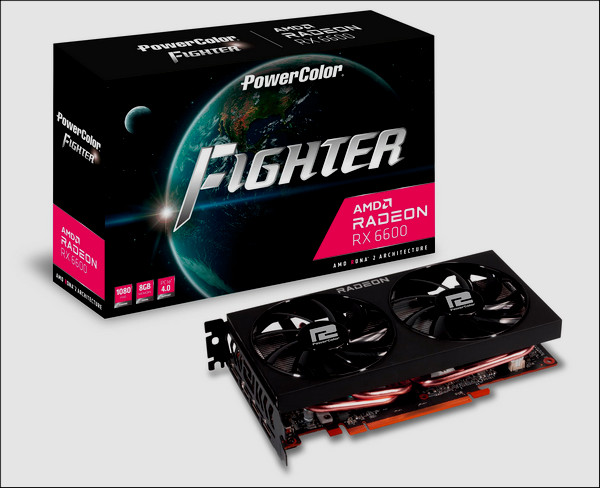
SPECIFICATIONS
- Core Clock (in Megahertz): 2044 (Game Mode), 2491 (Boost)
- Memory Clock (in Megahertz): 2100
- VRAM: 12 GB GDDR6
- Stream Processor: 1792
- Required PSU: 500 W (1×8-pin power connector)
- »Great for 1080p gaming.
- »Highly efficient.
- »Very quiet even under full load.
- »Lower temperatures when running games at higher settings.
- »Bad Ray Tracing performance
- »Limited overclocking potential
Why We Picked It
The Power Color RX 6600 is a great starting point for a budget GPU. There are some key criteria that are crucial for a budget graphics card ‒ performance, efficiency, and cooling. It not only meets them but surpasses our expectations.
Let’s start with performance.
We tested the most demanding titles and cranked up the details to their highest available settings. Ray tracing and upscaling, such as FSR, were not enabled.
Cyberpunk 2077 yielded 50 FPS, while Red Dead Redemption 2 got us a smooth 58 FPS. We did not encounter any frame drop during our testing. I was surprised at how smoothly The Last of Us ran. We got an average of 60 FPS with drops to 47 FPS in the most demanding scenarios with high settings enabled.
Another demanding title was Jedi Survivors, and we got an average of 50 FPS with a minimum of 37 FPS. This has partly to do with bad optimizations in the game overall. But still getting smooth gameplay in this title spoke highly in regard to RX 6600.
If we talk about temperatures, we got an average temperature of 70 degrees even when running the most taxing titles. The fans weren’t loud, though, and we could measure a fan noise of only 29 decibels. What’s even nicer is that fans stop spinning completely when the GPU is not used.
The power draw was what blew me away. While gaming, we measured a peak power of only 120 watts. This is simply amazing, and the benefits of RDNA2 architecture are truly showing up here.
The only drawback we felt was the limited scope for overclocking. This has to do with the power limit set by AMD. You can tweak settings here and there, but the gains are not substantial.
Who It’s For
- Looking for the best 1080p card without spending too much.
- Have a budget power supply unit.
What We Liked Most
- Fantastic 1080p performance.
- Really affordable.
- Good thermals and cooling.
- Modest power draw. Only a single 8-pin power plug is required.
What We Didn’t Like
- Very limited overclocking potential.
Verdict
The Powercolor RX 6600 is simply the best affordable GPU you can buy now. With a consistent 60 frames across demanding titles and low power requirements, this is a great buy for budget-conscious gamers.
How We Test For The Best Graphics Cards For i9 10900K
We look at many factors before deciding which GPU fits in a specific price segment. Rigorous testing follows that ensures you get the most value out of your hard-earned cash.
So what exactly do we look for when selecting a GPU?
First, we select the resolution we want to target for a specific GPU. After that, we shortlist GPUs that offer the best value. We look for discounts, which means you can get a mid-range GPU even with the bucks you would normally spend with an entry-level card.
Video memory, memory interface, and GPU clock speed are some metrics we look closely at when choosing between similar models.
Once we do that, we run the titles at the targeted resolutions. Details are set to the maximum to establish a baseline performance.
Next comes the thermal performance of each graphics card. We measure the temperatures and fan speed. The fan noise is also something that we look for. A noisy fan on your graphics card is no good if it cannot keep your GPU cool. Additionally, we check if there is any thermal throttling present on the GPU that can reduce the performance in games drastically.
Finally, we take into account the additional features that are bundled. RGB support, OEM software, and overclocking potential are some things to look out for.
Frequently Asked Questions
What is the best GPU for Intel i9-10900K?
The RTX 4090 is the absolute best GPU that you can pair with an Intel i9-10900K. With performance not seen before, it is the perfect choice for you if you want the very best.
Is i9-10900K good with RTX 3080?
The i9-10900K is perfectly capable to push the most out of an RTX 3080. But if you are looking to buy a new GPU in 2023, the RTX 4080 seems to be the way to go.
How much power does the i9-10900K need?
Normally, the i9-10900K uses up to 200 watts at full load. But if you enable the multi-core-enhancement and run the CPU at Turbo clock speed in all cores, it can consume up to 300 watts.
What is the maximum ram speed supported by the Intel i9 10900K?
As per Intel Ark, the i9 10900K supports memory up to 2933 MHz, but when you use the XMP profile, this can go to as high as 3200 MHz.
Does the Intel i9-10900K support PCI-E 4.0?
No, the Intel i9-10900K supports PCI-E 3.0 with 16 lanes dedicated to the CPU.

